Orchids are flowering plants in many colors, shapes, and sizes. Orchid plants are native to tropical and subtropical regions worldwide and are popular houseplants. While they are often seen as delicate and difficult to care for, many easy-to-grow orchid species make excellent houseplants for beginner gardeners. This article will provide a list of easy-to-grow orchid plants that anyone can grow successfully indoors.
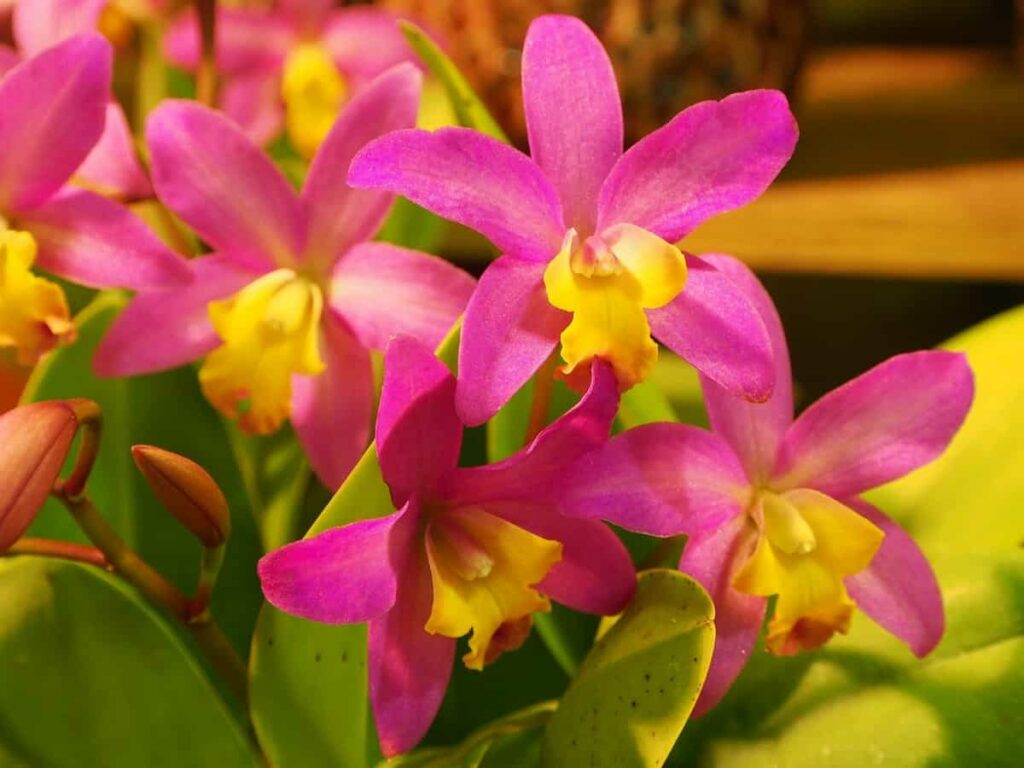
We will also provide basic care tips for each species to help you get started. The best easy-to-grow orchid plant list contains the most likely to thrive in your home, office, or garden with little care. The following plants are perfect for beginners or those with little time to devote to their plants.
| Phalaenopsis Orchid | Paphiopedilum Orchid |
| Dendrobium Orchid | Miltoniopsis Orchid |
| Oncidium Orchid | Sarcochilus Orchid |
| Cattleya Orchid | Brassavola Orchid |
| Vanda Orchid | Cymbidium Orchid |
Easy to grow orchid plants for beginners
Best place to put your orchid plant
When it comes to orchids, one of the most important things to remember is that they like bright, indirect sunlight. This means that the best place to put your orchid plant is somewhere where it will get plenty of light but not be in direct sunlight. Some good places to keep your Orchid include near a window with plenty of light or in a sunroom. If you don’t have either of these options, you can use grow lights to provide your plant with the light it needs.
Soil requirement for orchid plants
To ensure that your orchid plant thrives, it is important to understand its needs, including the type of soil required. For most Orchidaceae species, a well-draining potting mix is essential to prevent root rot. You can create your mix by blending equal parts of sphagnum peat moss, coarse sand, and perlite. Alternatively, you can purchase a pre-made Orchid potting mix from a garden center or online retailer.
In case you missed it: Orchid Gardening For Beginners – How To Start, FAQs
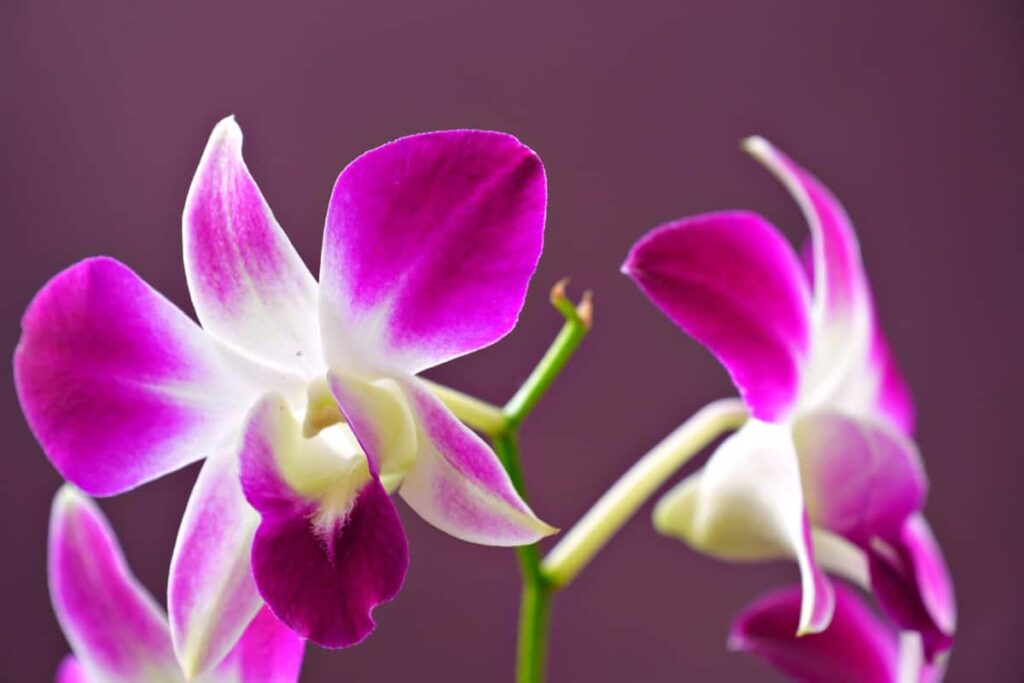
Read the labels carefully to verify that the mix contains ingredients suitable for Orchids. When repotting your Orchid, it is essential to use a pot that is slightly larger than the current one. This will help to prevent over-watering orchids, which can lead to root rot. Once you have selected an appropriate pot and soil mix, be sure to water your Orchid deeply but sparingly – this will allow the dirt to dry out between the waterings of your Orchids.
Orchid plants propagation
Orchid plants are beautiful, unique flowers in various colors, sizes, and shapes. They’re popular for indoor and outdoor gardens and can be propagated easily from stem cuttings. First, remove a healthy shoot from the mother plant using sterilized pruning shears to propagate an orchid plant from stem cuttings. Cut the shoot into 2 to 3-inch pieces, ensuring each piece has at least 2 to 3 leaves.
Next, dip the cut end of each stem piece into rooting hormone powder or gel. This will help encourage root growth. Then, plant the stem pieces in moistened potting mix or perlite. Place the pot in a warm, bright location from direct sunlight, and keep the soil moist but not soggy. Within 4 to 8 weeks, you should see new growth appearing on the stems. Once the roots have developed sufficiently, you can transplant the newly rooted plants into pots.
In case you missed it: Orchid Growing For Beginners – Tips, Ideas, Techniques
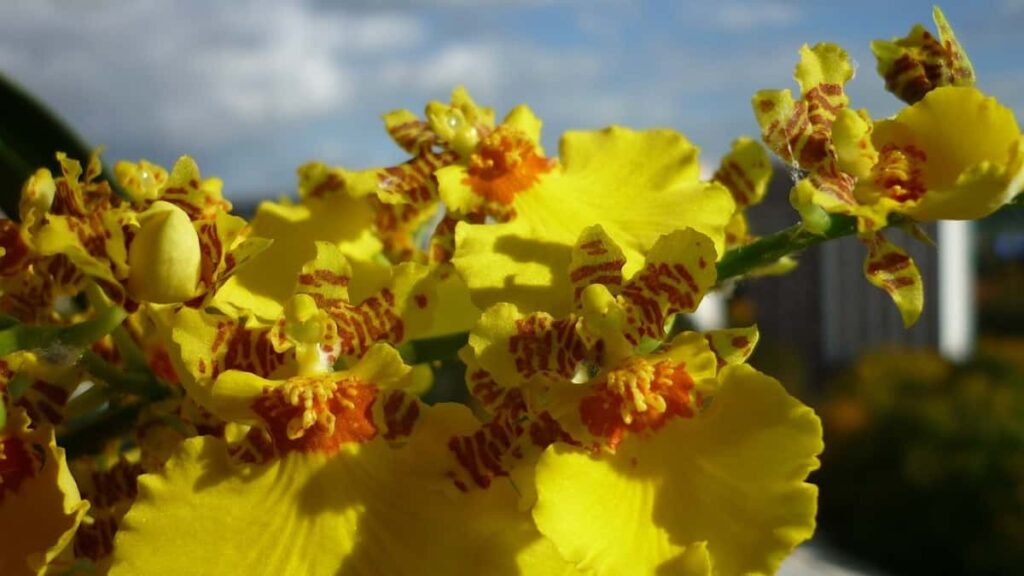
How to plant your orchids
Planting orchids can seem daunting, but with some know-how, it can be easy and fun! Here are some tips, ideas on how to plant your orchids:
- Choose the right pot: Orchids need a pot with drainage holes and breathable material, such as clay or plastic. Avoid using pots made of non-porous materials, such as metal or glass, as these can trap too much moisture and lead to root rot.
- Choose the suitable soil: Orchids do best in a light, well-draining potting mix. You can purchase a commercial mix for orchids or make your own by mixing equal parts perlite, bark chips, and sphagnum moss.
- Water wisely: Over-watering is common mistake made by beginners when caring for orchids. Be sure only to water your Orchid when the potting mix is dry to the touch. And when you do water, use lukewarm water and allow the excess to drain completely.
- Fertilize regularly: Orchids must be fertilized every two weeks during their growing season (usually spring and summer). Use a balanced fertilizer formulated for orchids and follow the directions on the package.
- Give them light: Most orchids prefer bright, indirect sunlight.
How often to water your orchid plant
Assuming you are growing your Orchid in potting mix and not mounted, you should water your Orchid when the potting mix is dry. Depending on the pot size, weather conditions, and type of potting mix, this can be every 7 to 14 days. Check your Orchid regularly so you don’t overwater it.
In case you missed it: Growing Orchids Hydroponically – a Full Guide
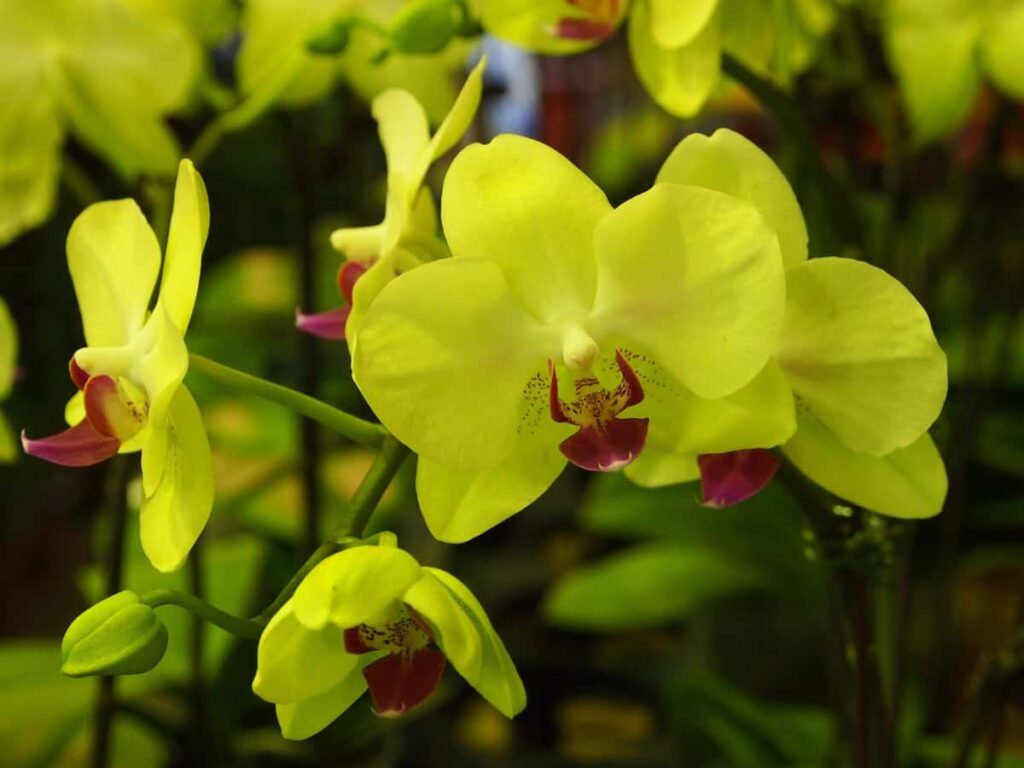
Orchid plants care
If you want to add elegant beauty to your home, look no further than the orchid plant. Orchids are among the most popular houseplants due to their magnificent blooms, which come in many colors. They’re also relatively easy to take care. In this article, we’ll cover everything you need to know about orchid plant care so that you can enjoy these gorgeous flowers for years to come.
When it comes to orchid plant care, the most important thing is to provide them with plenty of light. Orchids thrive in bright, indirect sunlight, so aim to place them near a window where they can get plenty of light without being in direct sun. If your Orchid isn’t getting enough light, its leaves will turn yellow.
Another crucial element of orchid plant care is proper watering. These plants don’t like their roots to sit in water, so be sure to empty the drip tray after watering and never let your Orchid sit in waterlogged soil. Allow the top couple of inches of soil in the pot to dry out before another watering, and be sure not to overwater – this can result in root rot of Orchids. In addition to light and water, orchids need good air circulation to prosper.
What kind of light does an orchid plant need?
An orchid plant needs bright, indirect light. It should be placed in an east- or west-facing window. You can place the plant under fluorescent lights if you don’t have a bright window.
In case you missed it: How to Grow Dill from Seed to Harvest: Soil, Propagation, Planting, and Care
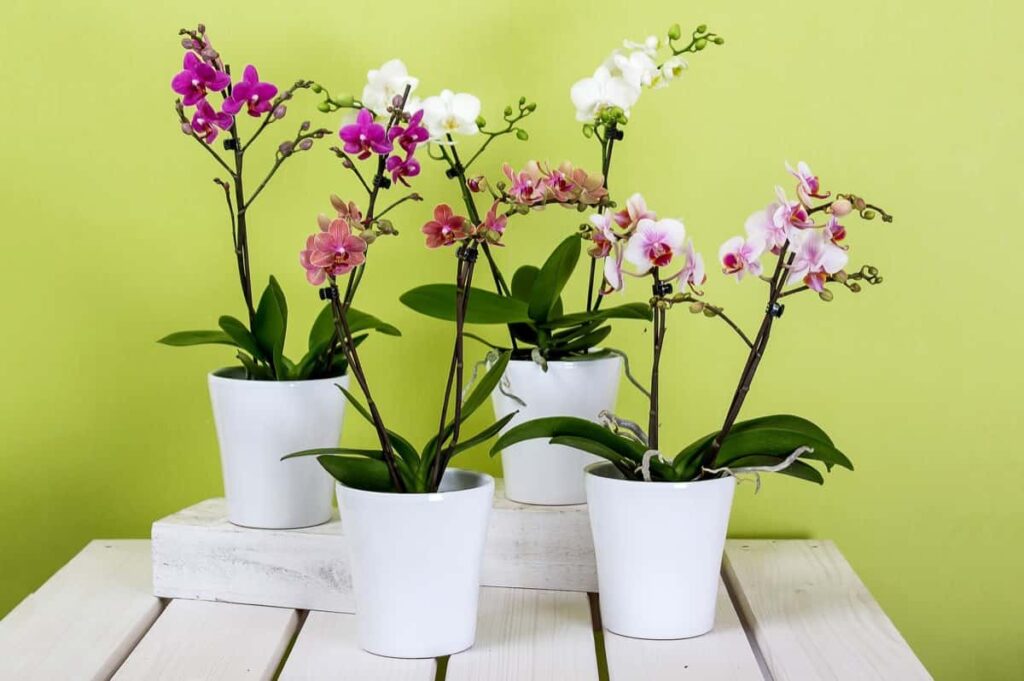
Do orchid plants need fertilizer?
Fertilizer is not required for orchids but can help promote growth. A general-purpose fertilizer with an N-P-K ratio of 20-20-20 can be used. Apply the fertilizer monthly at one-fourth of the recommended rate on the package. Too much fertilizer can damage the roots and lead to poor plant growth.
How to repot an orchid plant
When it comes time to repot your Orchid, you have to gather a few supplies, including:
- A clean pot with drainage holes
- Orchid potting mix
- A sharp knife
- Gloves (optional)
Once you have your supplies, follow these simple steps:
- Using the sharp knife, carefully remove the Orchid from its current pot. Be careful not to damage the roots.
- Loosen the root ball and shake off any excess old potting mix.
- Place the Orchid in the new pot and fill it in with the fresh potting mix, leaving room at the top of the pot for watering. Gently press the mix around the roots to secure.
- Water your Orchid well and place it in a good spot out of direct sunlight
Tips for successful Orchid growing
There’s no better way than with orchids for a touch of elegance around your home. But if you’ve never grown one, you might wonder where to start. Here are a few tips, and ideas to help you get started with growing orchids:
- Start with a healthy plant. Orchids are available at most nurseries and garden centers, but it’s important to choose a healthy plant to start with. Avoid plants that have wilted leaves or flowers or that seem otherwise unhealthy.
- Choose the right potting mix. Orchids need a particular type of potting mix that is designed for their needs. You can find this mix at most nurseries and garden centers or online.
- Water regularly, but don’t overwater. Orchids must be watered regularly, but be careful not to overwater them. These plants should never be allowed to sit in water for too long, as this can lead to root rot.
- Give them plenty of light. Orchids need bright, indirect light to thrive. If you’re growing them indoors, place them near a window where they will get plenty of light without being directly in the sun.
- Fertilize regularly. Orchids need to be fertilized regularly to bloom well. You can use a specially formulated orchid fertilizer
In case you missed it: 42 Key Rules for Container Gardening: From Planning to Reducing Production Cost
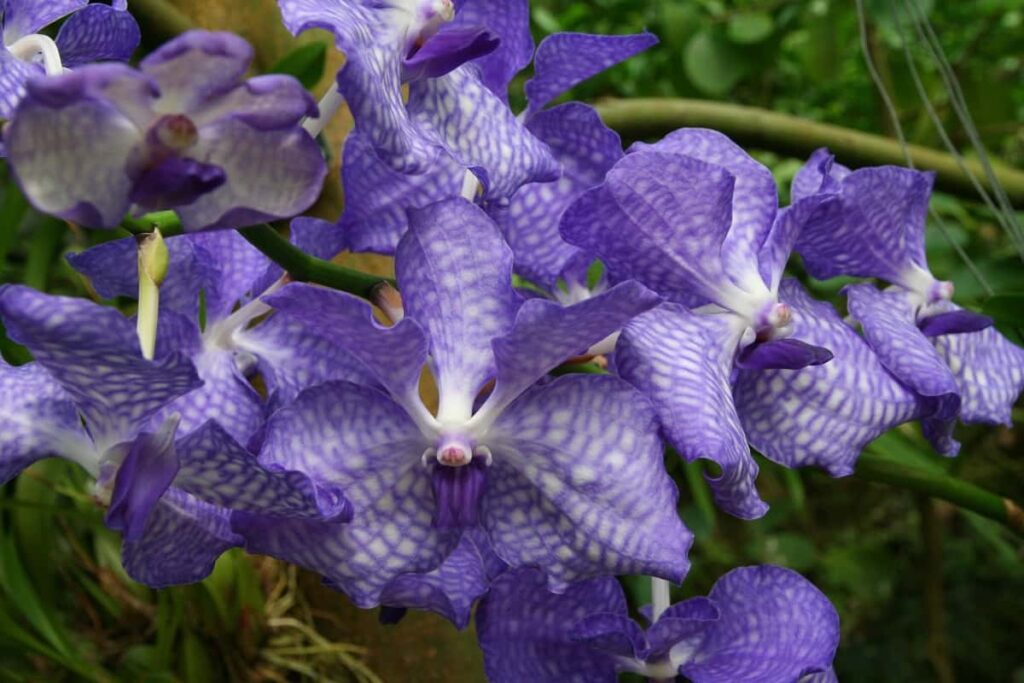
Frequently Asked Questions (FAQs)
What is the easy and best way to care for your orchid plant?
The best way to care for an orchid plant is to keep it in a warm, humid environment with plenty of indirect sunlight. Water your Orchid regularly, but be sure not to overwater it. You must allow the soil to dry out between watering sessions completely. It is recommended to fertilize your Orchid plants once a month with a balanced fertilizer.
How often should I water my Orchid?
To water your Orchid, you should allow the dirt to dry out completely before watering it again. Do this every week. Overwatering can lead to root rot, so don’t overwater your plant.
What type of fertilizer is best for an orchid?
A balanced fertilizer is best for an orchid. Look for one that is high in nitrogen, phosphorus, and potassium. Fertilize your Orchid once a month during its growing season (spring and summer).
Conclusion
All the Orchid plants on this list are known for being low-maintenance and easy to care for, so you won’t have to worry about them too much. These plants are perfect for beginners or experienced gardeners. Whether you need something exotic or a common addition to your garden, this list has it all! So what are you waiting for? Get growing these wonderful orchids!
- How to Grow Tomatoes Organically at Home: A Comprehensive Guide
- Organic Gardening on a Budget: Low-Cost Methods and Materials
- Gongura Seed Germination and Planting Methods
- Cabbage Seed Germination and Selection
- Broccoli Seed Germination and Selection
- Asparagus Seed Germination and Variety Selection
- Seasonal Flower Gardening: Best Practices for Spring, Summer, Fall, and Winter
- How to Grow Hibiscus from Flower
- Plantation Ideas for Home Decoration: A Beginners Guide
- Flower Garden Designs and Layouts for Beginners
- Planting and Spacing Techniques in Papaya: A Beginner’s Guide
- Growing Gold: Essential Techniques for Planting Pineapples
- How to Make Kalanchoe Plant Bushy: Home Remedies and Solutions
- 11 Reasons Why Your Gardenia is Not Blooming: Home Remedies and Solutions
- Eco Elegance: The Guide to Designing a Drought-Tolerant Landscape
- Gardening on a Slope: Strategies for Hillside Landscaping
- Nourish and Flourish: Top Organic Mulches for Thriving House Plants
- Everything You Want to Know about Indian Mogra Flower: Discover Uses and Growing
- Green Thumb Success: Expert Tips for Cultivating Greenhouse Pumpkins All Year Round
- Maximize Growth & Flavor: The Ultimate Guide to Companion Planting in Herb Gardens
- How to Control Rhododendron Problems Naturally: Home Remedies and Organic Ways to Fix Them
- Natural Magic: The Remarkable Benefits of Cinnamon for Plants
- Best Steps to Revive Dying Tulip with Natural and Organic Treatment
- 10 Reasons Why Your Angel Trumpet is Not Blooming: Remedies and Treatment
- How to Fix Periwinkle Leaf and Flower-Related Problems: Natural Remedies and Solutions
- How to Fix Zinnias Leaf and Flower Problems: Discover Natural and Home Remedies
- Organic Steps to Induce Lemon Tree Flowers: A Comprehensive Guide
- Bloom Booster: Crafting the Perfect Homemade Bougainvillea Fertilizer
- Optimizing Growth: A Guide to Applying NPK Fertilizer for Potted Plants
- 10 Best Homemade Fertilizers for Rubber Plant: DIY Recipes and Application Method
- How to Boost Female Pumpkin Flowers: Effective Steps for More Flowers and High Yields
- Transform Your Indoor Garden: Top Benefits of Pink Salt for Houseplants
- 10 Best Homemade Fertilizers for Peacock Plants (Calathea): Easy DIY Guide
- Unlock Blooms: 9 Reasons Why Your Potted Chrysanthemum is Not Blooming
- 8 Reasons Why Your Potted Hibiscus is Not Blooming: Fix it with Simple Solutions
- Unlock Blooms: 9 Key Reasons Your Potted Frangipani Won’t Flower